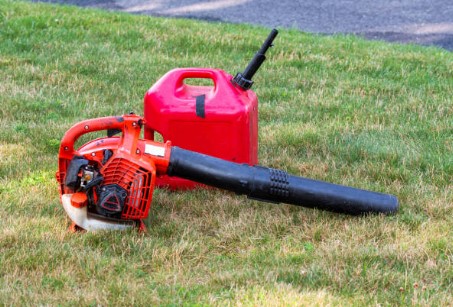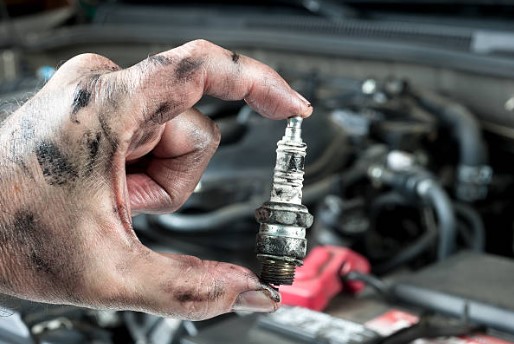How to Start an Echo Leaf Blower: A Step-by-Step Guide
While raking is an easy job that you can tell your child to do, raking incessantly after a while can be undesirable. And since your tree tends to shed its leaves several times a year, you may need a blower to handle the leaves.
The Echo leaf blower stands as a top-notch choice within your reach. It is not only affordable but also has reliable and durable performance. Do you know how to start an Echo leaf blower quickly and efficiently? Let’s find out through this blog.
Exploring Different Models of Leaf Blowers: Echo’s Lineup

Echo offers various models to cater to multiple yard maintenance needs. Here’s a look at some of their popular models:
Echo PB-580T
Renowned for its impressive effectiveness, the Echo PB-580T represents a backpack-style leaf blower recognized for its potent capabilities to cater to the needs of both expert landscapers and homeowners with expansive properties. This gasoline-fueled blower delivers remarkable blowing potency while ensuring comfortable usage.
Echo PB-2520
The Echo PB-2520 is a handheld gas-powered blower that balances power and portability. It’s perfect for homeowners with medium-sized yards and tasks that require precision.
Echo PB-755ST
The Echo PB-755ST is another backpack model that delivers high airspeed and volume. With its ergonomic design, this gas-powered blower is well-suited for heavy-duty tasks, making it a professional favorite.

Echo PB-250LN
The Echo PB-250LN is a lightweight, compact, handheld blower for easy use. This gas-powered model is great for clearing leaves and debris from driveways, walkways, and smaller yards.
Echo PB-500T
The Echo PB-500T is a backpack blower that offers power and efficiency. This gas-powered blower is Suitable for residential and professional use and provides reliable performance for various tasks.
Echo’s leaf blower models cater to different preferences and yard sizes, ensuring a suitable option for every user. Whether you need the robust performance of a backpack blower or the convenience of a handheld model, Echo has a range of choices to help you keep your yard clean and tidy.
How to Start an Echo Leaf Blower
Before starting your leaf blower, take a moment to peruse your user manual. While this step might appear unnecessary, especially if you’re familiar with similar models, it’s crucial as fuel ratios and operational instructions vary. Please familiarize yourself with each component of your leaf blower before initiating its operation.
Whether you’re working with an electric corded, cordless, or gas-powered leaf blower, ensure proper connection. You need to know that you are inadequately plugged in, your battery is sufficiently charged, or your fuel tank is filled. If using a gas-powered blower, adhere to the recommended fuel quantity and ensure the cap is securely fastened.

Most gas-powered leaf blowers have a 2-cycle engine, chosen for its compact size and high power output. These engines are slightly more involved to start compared to electric variants, so adhere to the following steps:
Step 1: Prepare the Gas and Oil Mixture
2-stroke engines necessitate a fuel blend of gasoline and oil for operation. Most models utilize one-part oil and 50-part gas, translating to a 1:50 ratio. This equates to 2½ ounces of oil per gallon of gas. Confirm the proper ratio for your specific model by consulting the manual.
Step 2: Pour in Slowly
After creating the gas and oil mixture, carefully pour it into the leaf blower.
Step 3: Check the Starter Switch
If your blower features an “on” switch, ensure it’s in the correct position; otherwise, it won’t start.
Step 4: Set the Choke
When starting from a cold state, position the choke in the starting Position before proceeding.
Step 5: Prime the Engine
You can prime the engine by pressing the primer bulb around five or six times.

Step 6: Pull the Starter Cord
Grasp the cord firmly with one hand and secure the blower with the other. Give the line a vigorous pull, repeating the action four or five times if needed. After each appeal, slowly retract the cord instead of letting it snap back.
Step 7: Let the Engine Idle
Once the engine starts, allow it to idle for approximately 10 to 30 seconds. For models with a manual choke, transition the choke to the “run” Position after the engine has run for a while. Some models possess a semi-automatic choke that reverts to the run position automatically.
Step 8: Engage in Leaf Blowing
If you’ve followed the steps accurately, your engine should be running and ready to begin your leaf-blowing tasks.
Troubleshooting Tips for Starting Issues

Experiencing difficulties starting your Echo leaf blower can be frustrating, but fear not – many common problems have straightforward solutions. Let’s explore some troubleshooting tips to help you identify and address potential starting issues:
Fuel Quality
It’s essential to ensure you’re using the correct fuel mixture recommended by the manufacturer for gas-powered leaf blowers. Check your user manual for the proper fuel ratio. Stale fuel can also contribute to starting problems; consider replacing old power with fresh energy.
Primer Bulb
The primer bulb’s proper functioning is crucial for starting. Ensure you’re pressing it the correct number of times based on your blower’s specifications. A malfunctioning primer bulb can disrupt the fuel supply necessary for starting.
Choke Position
The Position of the choke significantly impacts the starting for gas-powered blowers. Follow the correct steps to open or close the choke, depending on your blower’s engine type, to regulate the air-to-fuel ratio.
Air Filter
A clogged air filter helps to impede airflow and cause starting issues. Clean the air filter and ensure it’s securely in place before starting the blower.
Spark Plug
A worn or fouled spark plug can hinder ignition. Check its condition and replace it if necessary, following your user manual’s guidelines.

Fuel Lines and Filters
Clogs in fuel lines or filters can disrupt fuel flow. Inspect and clean these components to ensure proper fuel delivery.
Battery Charge
For electric cordless blowers, ensure your battery is sufficiently charged. A low battery can lead to starting problems.
Electric Connection
For corded models, ensure your power source, cord, plug, and outlet are in good condition.
Flooded Engine

If multiple start attempts fail, you might have a flooded engine. Allow the blower to sit briefly to let excess fuel evaporate.
Suppose you’ve diligently worked through these troubleshooting steps and are still encountering starting difficulties. In that case, it’s advisable to consult your Echo leaf blower’s user manual or reach out to Echo’s customer support for further assistance. You’ll likely identify and overcome the issue hindering your leaf blower’s smooth startup with patience and systematic investigation.
FAQs
Can I use regular gasoline in my Echo leaf blower?
It’s essential to use the type of gasoline recommended by Echo for your leaf blower. Most Echo gas-powered leaf blowers require a specific gas and oil fuel mixture. Consult your user manual to ascertain the appropriate fuel mixture ratio, guaranteeing peak performance and mitigating the risk of potential engine harm.
How often should I replace the spark plug?
The frequency of spark plug replacement can vary based on usage and operating conditions. As a general guideline, it’s recommended to inspect the spark plug annually and replace it if you notice signs of wear or fouling or if it’s not functioning correctly. Consult your user manual for precise guidance tailored to your particular model.
How long should I warm up the engine before using the blower?
Warming up the engine before using the blower ensures smoother operation. Let the engine operate for around 30 seconds to a minute before starting your leaf-blowing tasks. This brief warm-up period helps the engine reach its optimal operating temperature.
Conclusion
In summary, mastering how to start an Echo leaf blower entails a systematic process designed to cater to the specific model you possess. Whether dealing with a 2-cycle or 4-cycle engine, this procedure requires meticulous precision and strict adherence to safety guidelines. From the accurate preparation of fuel mixtures to the careful adjustment of the choke, along with priming and controlled pulling of the starter cord, each step plays a crucial role. Armed with these instructions on how to start an Echo leaf blower, you can confidently kickstart your outdoor tasks, all while ensuring optimal performance and the extended life of your equipment.
Related Articles